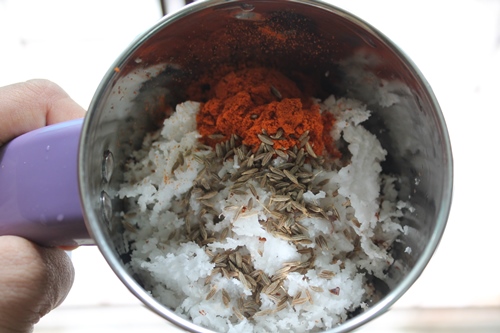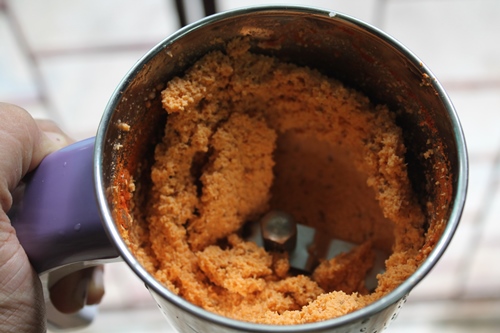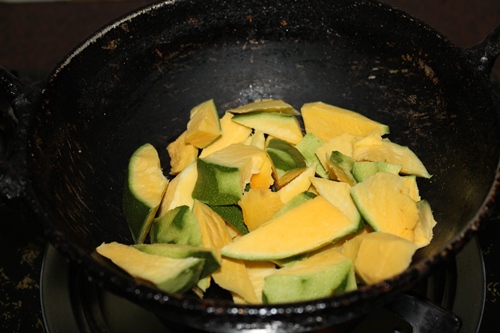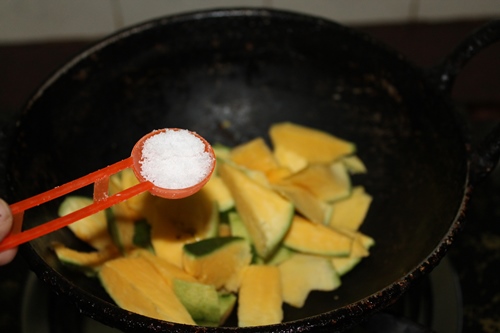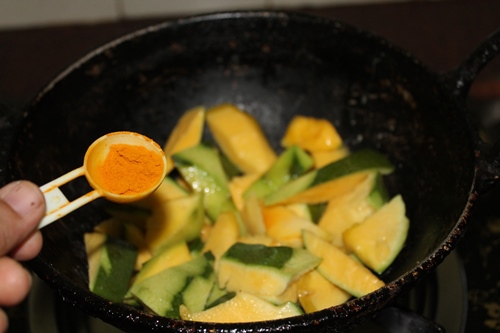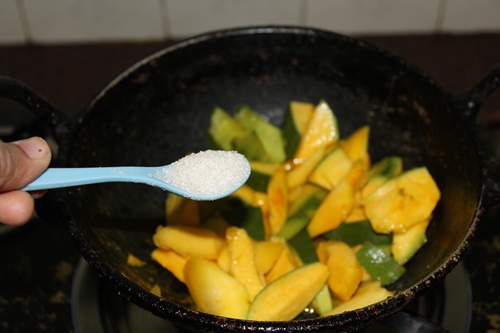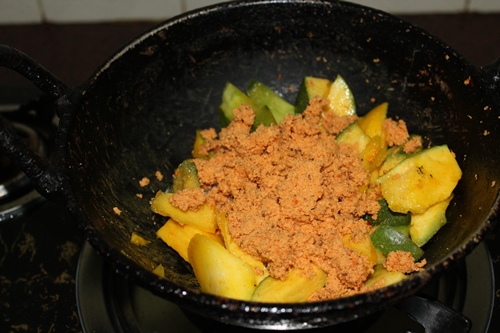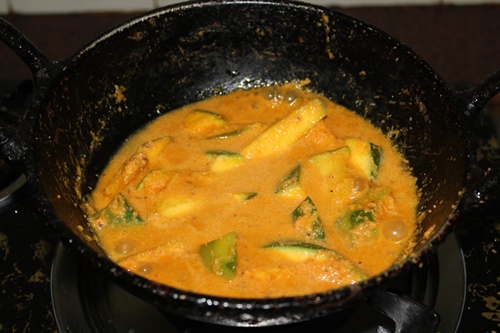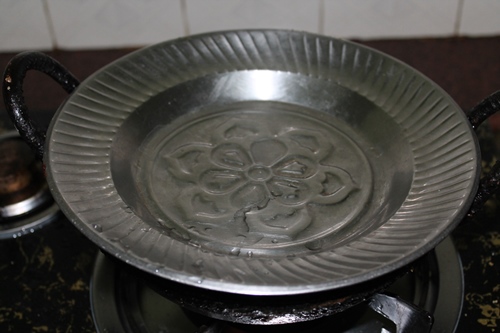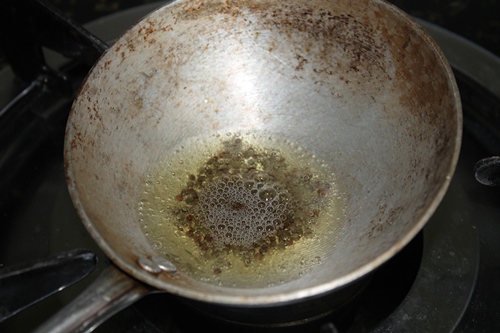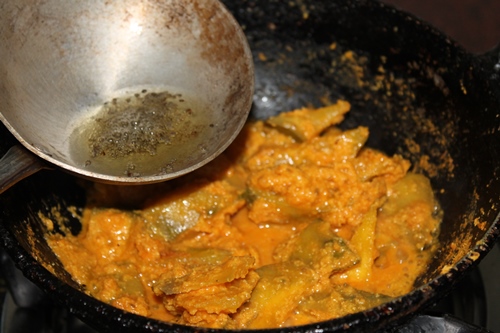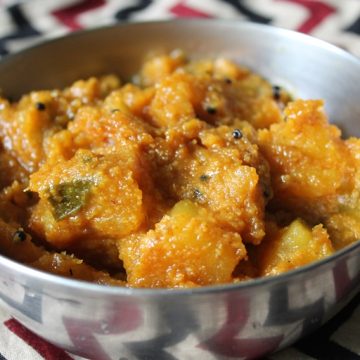
Mango Avial is a comforting South Indian dish made using raw mangoes that are gently cooked in a mildly spiced coconut gravy. It’s tangy, slightly sweet, a little spicy, and absolutely packed with flavor. The highlight of this dish is the raw mango — no mixed vegetables, just mango taking center stage.
It’s the kind of dish that instantly reminds you of home — warm, simple, and full of love. We usually make this when mangoes are just starting to ripen but are still firm and sour. Pair it with hot rice and maybe some sambar or rasam on the side, and you’ve got yourself the most satisfying meal.


Mango Avial
This recipe is very special to me because it’s something my Amma makes often and makes so well. The moment there’s a raw mango at home, her first question is always, “Shall we make mango avial today?” It’s her absolute favorite, and honestly, she’s passed that love down to all of us over the years. This isn’t a fancy recipe with too many steps or rare ingredients. It’s simple, straightforward, and full of heart.
What makes this dish stand out is the beautiful balance of flavors. The sourness of the mango is softened as it cooks, the coconut adds richness, the cumin gives it a warm, and a touch of sugar brings everything together. The turmeric gives that gentle golden glow, and the final mustard tempering just lifts the whole dish. Amma always serves it hot with rice and some light gravy — and no matter how often we have it, it never gets old.
Jump to:
I think what makes it truly unforgettable is the memory tied to it. Whether it’s a festival lunch or a simple weekday meal, if Amma’s mango avial is on the menu, you’ll always find empty plates and happy faces. It’s not just a dish, it’s a part of our home and our story.
About Raw Mango Avial
Mango Avial is a comforting South Indian dish made using raw mangoes that are gently cooked in a mildly spiced coconut gravy. The sharpness of the mango balances beautifully with the creamy coconut and the cumin. Once everything comes together, it’s finished with a simple mustard seed tempering that adds such a lovely aroma.
Amma’s Speciality Dish – If you enjoy dishes that strike the perfect balance between tangy, sweet, and spicy, this one’s going to become your favorite in no time. Mangai Avial isn’t just another curry; it’s a nostalgic, comforting South Indian classic that brings out the best in raw mangoes.
The way the sourness of the mango blends with the creamy coconut and the little hint of sugar is just divine. You’ll love how simple and straightforward this recipe is. No long ingredient lists or complicated steps, just real, wholesome flavors coming together beautifully. And here’s the best part, this recipe is a refreshing twist on the usual vegetable avial. If you’re someone who enjoys exploring traditional recipes with a unique twist, this is a must-try.
Similar Avial Recipes


Why This Recipe Works
This recipe works so well because it focuses on a few good ingredients and brings out their best. The raw mango is the star here, and it’s cooked just enough to retain a slight bite, which adds texture to the dish. Another reason this recipe works is balance. You’ve got the tang from the mango, a pinch of sugar to round it off, turmeric for warmth, and a little heat from red chilies.
And finally, it’s quick. You don’t need a long list of vegetables or spices. It’s all done in about 30–40 minutes, and yet it feels like a complete meal. You’ll be surprised how easily it fits into a weekday lunch while still having that festive, homely taste.
Ingredients for Mango Avial


Each ingredient in this recipe has a purpose, and here’s what they do:
Raw mango – This is the hero of the dish. It brings that refreshing tartness that sets the tone for the whole recipe. The size and sourness of the mango really affect the flavor, so go for a big, green, firm one.
Turmeric powder – Adds earthy warmth and that classic yellow tint. It balances the sourness of the mango too.
Salt – Essential for bringing all the other flavors together. Don’t hold back, the mango needs a good amount.
Sugar – This may seem surprising, but just a bit of sweetness works wonders against the sourness of the mango. Trust me, it rounds everything out. You can use jaggery instead of sugar.
Coconut – This is the base of the gravy. It gives that thick texture and subtle sweetness.
Cumin seeds (jeerakam) – Adds a mild earthy note and pairs so well with both. mango and coconut. It’s a classic combo in South Indian cooking.
Red chilli – You can use either based on your heat preference. It gives the dish its depth and mild kick.
Oil – Use coconut oil for a truly authentic touch. It lifts the entire dish.
Mustard seeds (kaduku) – The final tempering adds aroma and that familiar South Indian vibe. It crackles, it pops, it finishes the dish beautifully.


Hacks
1. Choose firm, raw mangoes – The mango should be tangy and not too soft. If it’s overly ripe, it’ll turn mushy while cooking and lose that lovely bite we want.
2. Use freshly grated coconut – It makes the gravy naturally rich and aromatic. But frozen coconut works too if you’re in a hurry — just thaw it well before grinding.
3. Control the spice – If you’re using dry red chilies, roast them lightly before grinding. It enhances the flavor and gives a beautiful color to the masala. And if you’re not into too much heat, just reduce the chili quantity.
4. Don’t skip the tadka – That little spoon of mustard seeds in hot oil may seem simple, but it brings in that final touch of magic. Let them crackle well before you pour it over the avial.
5. Let it rest – Just 10–15 minutes after cooking makes the flavors settle beautifully. It tastes even better when slightly cooled.
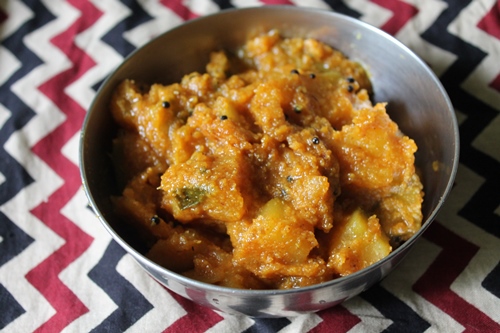

How to Make Mango Avial (Stepwise Pictures)
Expert Tips
Don’t overcook the mango – This is a big one. Mango should soften just enough to absorb the flavors but still hold its shape. If you let it boil too long or stir too roughly, it’ll break down into a mush, and you’ll lose that nice bite in every spoonful.
Taste the mango before cooking – Raw mangoes can surprise you. Some are extra sour, while others are mellow. Always taste a small bit and adjust the sugar based on that. This dish is all about balance, you want a little sweet, a little tangy, and just enough heat.
Use fresh grated coconut if possible – Frozen coconut works in a pinch, but fresh coconut brings unmatched flavor and aroma. It gives the dish that creamy, earthy backbone and a slightly grainy texture that we all love.
Coconut oil is your best friend – Especially for the tempering. Even just a teaspoon of coconut oil adds that authentic South Indian warmth. If you’ve grown up in a Tamil or Kerala kitchen, that smell alone brings back memories.
Make it ahead if you can – Like many traditional dishes, Mangai Avial actually tastes better after a few hours. Once it rests, the mango soaks up all the flavor from the masala, and the whole thing becomes more harmonious and delicious.
FAQ
Q: Can I use semi-ripe mangoes if I don’t have raw ones?
A: Technically yes, but I’d recommend sticking with fully raw, firm mangoes for best results. Semi-ripe mangoes can turn too soft during cooking and might make the dish overly sweet, which messes with that perfect sweet-sour-spicy balance.
Q: What if I don’t have coconut?
A: That’s a tough one, because coconut is the soul of this dish. But in emergencies, you can blend a few soaked cashews with cumin and chili as a backup. The flavor will change, but you’ll still get a creamy texture. That said, the dish is truly special only with coconut.
Q: How long does Mangai Avial keep?
A: It keeps well for about 2 days in the fridge. Store it in an airtight container and just warm it gently before serving. Don’t boil it again after storing — just enough heat to warm it through is perfect. Overheating can make the mango too soft.
Q: Can I add other vegetables?
A: Definitely! If you want to bulk it up or give it more variety, you can add traditional avial vegetables like ash gourd (poosanikai), raw banana (vazhakkai), or drumsticks. Just make sure to preboil them before adding them with the mango so that all the ingredients cook evenly.
Q: Can this be served with anything other than rice?
A: Rice is the classic pairing, especially when you’ve got a light rasam or sambar on the side. But you can also try this with millets or even chapati for a twist.
Variations to Try Next Time
● Kerala-style twist with curd – Some people like to finish their avial with a spoonful of whisked curd or buttermilk. It adds another layer of tang and gives it that creamy feel. If you try this, remember to remove the dish from heat before adding curd, otherwise it might split.
● Mix and match veggies – Like we mentioned earlier, this avial can be extended by adding other veggies. Think pumpkin, carrots, or even some green beans, just keep the mango-to-veggie ratio in favor of the mango so it doesn’t get lost.
● Mango Avial Rice Bowl – My personal favorite leftover hack: take a scoop of this avial, mix it with hot rice, drizzle some ghee, and eat it with a pappadam. It’s comfort food in its purest form.
More Avial Recipes to Try
📖 Recipe Card
Raw Mango Avial Recipe (Maangai Avial)
Servings: 4 servings
Calories: 150kcal
Ingredients
For Grinding (Coconut Masala)
Instructions
Pre-Prep – Start by peeling and chopping one large raw mango into medium-sized pieces. Not too small, we want them to hold shape while cooking. Next, grate your coconut (or take it out of the freezer and thaw if using frozen). Keep all your ingredients measured and ready, it saves you from running around.
Making the Coconut Masala – In a small blender jar, add 1 cup grated coconut, 1 tsp cumin seeds, and 1–2 tsp red chilli powder or dry red chilies. Don’t add too much water — we want a slightly coarse paste, not a runny one. Give it a good blend and set aside. This is your base gravy.
Cooking the Mango Curry – In a kadai or thick-bottomed pan, add the chopped mango pieces, 1 tsp turmeric, a bit of salt, and 1 tbsp sugar. Pour enough water to just cover the mangoes. Let it cook for 10–15 minutes on medium flame till they’re halfway soft. Now, add the coconut masala to the mangoes. Add a little more water if it looks too thick. Let it simmer gently for another 10 minutes till the mangoes are cooked through and the gravy has thickened nicely.
Tempering and Finishing – In a small tadka pan, heat 1 tbsp oil. Once hot, add 1 tsp mustard seeds and let them crackle. This takes about 30 seconds. Immediately pour this sizzling tempering over the mango curry and give it a gentle stir. And that’s it — Mangai Avial is ready to be served! It tastes amazing with hot rice, sambar, rasam, or even just a dollop of ghee.
Notes
Nutrition
Serving: 1servings | Calories: 150kcal | Carbohydrates: 15g | Protein: 1g | Fat: 11g | Saturated Fat: 9g | Polyunsaturated Fat: 0.3g | Monounsaturated Fat: 1g | Sodium: 6mg | Potassium: 185mg | Fiber: 3g | Sugar: 11g | Vitamin A: 585IU | Vitamin C: 30mg | Calcium: 18mg | Iron: 1mg
If you have any questions not covered in this post and if you need help, leave me a comment or mail me @[email protected] and I’ll help as soon as I can.
Follow me on Instagram, Facebook,Pinterest ,Youtube and Twitter for more Yummy Tummy inspiration.
IF YOU MAKE THIS RECIPE OR ANYTHING FROM YUMMY TUMMY, MAKE SURE TO POST IT AND TAG ME SO I CAN SEE ALL OF YOUR CREATIONS!! #YUMMYTUMMYAARTHI AND @YUMMYTUMMYAARTHI ON INSTAGRAM!
More Raw Mango Recipes
Reader Interactions

Source link
